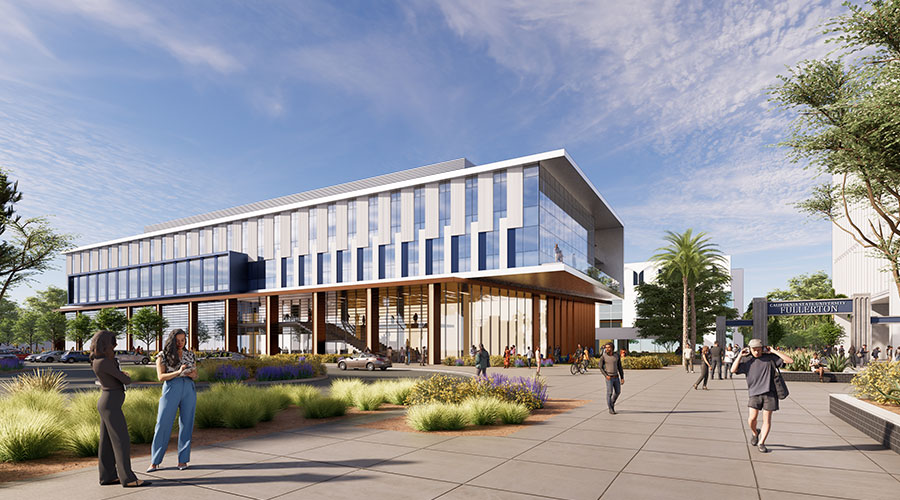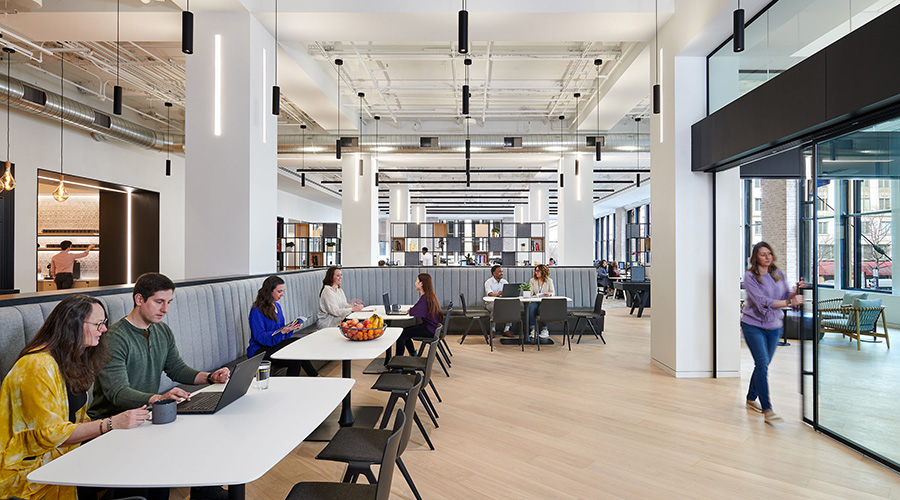Collaborative Workspaces Encourage Communication, Idea Sharing, Flexibility
Some types of work naturally lend themselves to collaboration to encourage communication, idea sharing and flexibility. Students work in open spaces beginning at a young age, having just enough space to claim a desk or locker as their own. Newsrooms are typically open areas where reporters and editors can easily communicate without walking from office to office or cubicle to cubicle. A portion of the work that Congress conducts is in large, wide-open chambers.
The idea of designing a workplace to encourage collaboration clearly isn't new. And when it comes to fostering teamwork, there's no one template that applies across all organizations. But more and more companies are pushing harder and harder to encourage open communication and spontaneous idea sharing. Organizations that already have open-plan workspaces are trying new approaches to maximize collaboration. And even those whose work involves client confidentiality and privacy are turning to open office space that encourages collaboration.
"There's been a recognition of the value of multiple sets of eyes on something and being able to talk among your peers," says Jason Rosenblatt, design director, Nelson.
The ease of sharing of ideas is particularly important given the increasing complexity of problems that workers are addressing, experts say. And those problems aren't just more complex, they are also more global than they were in the past, says Anne-Laure Fayard, a professor of management at the Polytechnic Institute of New York University.
"In order to solve these problems or even to understand their customers' needs, (companies and organizations) need to develop rich understandings of the world," Fayard says in an email. "Add to this that the speed of change is accelerating. This creates a need for multidisciplinary work and collaboration."
Problem-solving requires involvement not only from the employees of the company who are directly tasked with solving a problem, but also from the client and third or external parties, such as consultants and independent contractors, says Gary Miciunas, principal, advisory services, Nelson.
The team approach to collaboration not only occurs inside and outside an organization, it also happens in a variety of locations. The individuals could be at a table in the same room, they could be in the same building but in different workspaces, or they could be in different cities on a conference call. "The idea of collaboration is much larger than people sitting around an open table like they are in college," says Tom Polucci, director of interiors, HOK.
Having greater collaboration, including taking a more team-oriented approach, also involves generational changes, demographic shifts and evolving cultures. Employees in their 20s and 30s worked with their classmates to solve problems beginning as early as kindergarten and extending into college. For some of them, taking that approach into their career is a natural transition.
Nelson's Rosenblatt says he's heard younger employees talk about how they don't want to work in the same environment as their parents did. "It's more open, it's team-based and not working by themselves," he says.
Related Topics:













